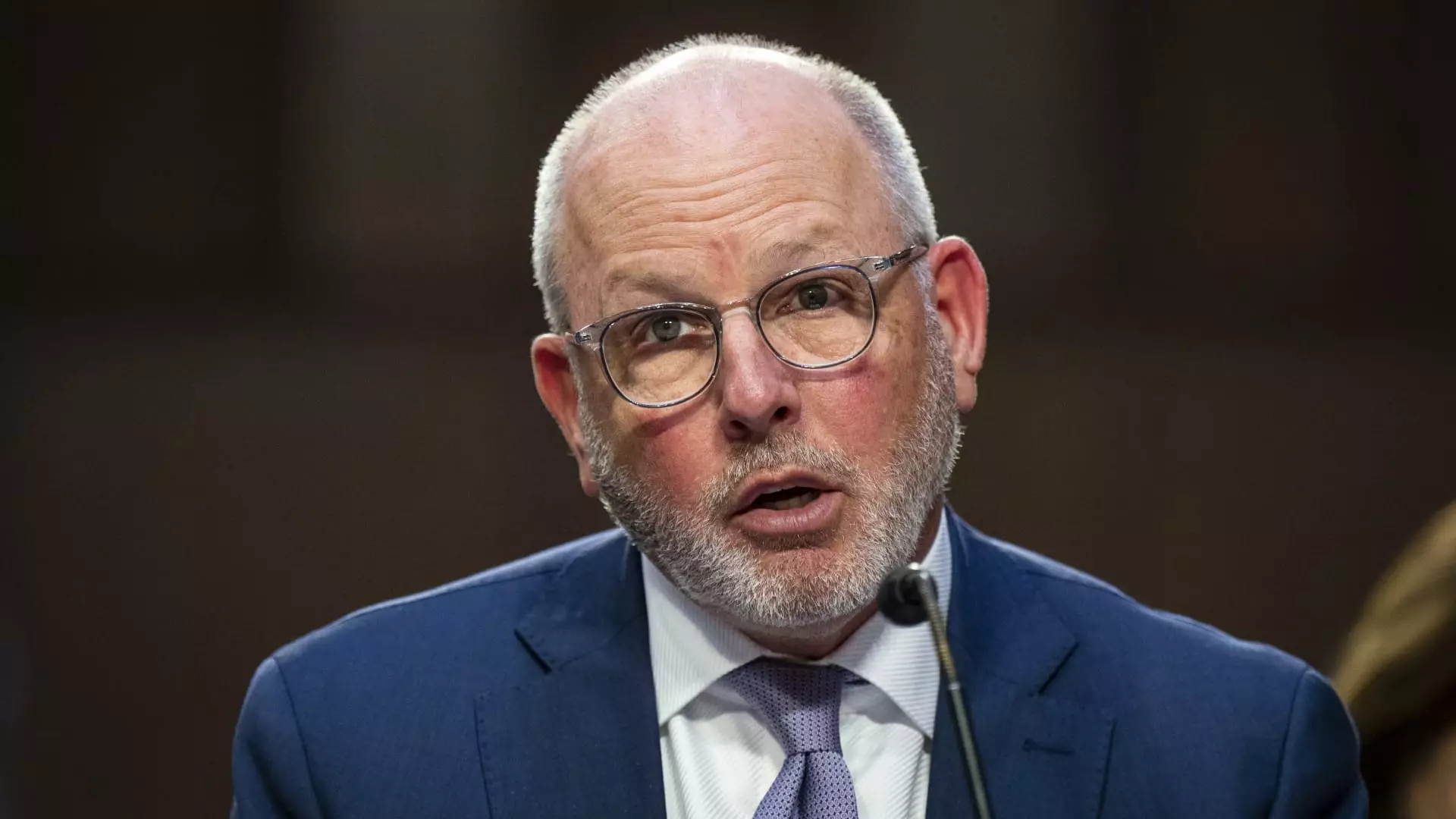In the complex world of prescription medications in the United States, the term “pharmacy benefit manager” (PBM) often sparks intense debate. The recent remarks by CVS Health CEO David Joyner during the company’s fourth-quarter earnings call have thrust this topic back into the spotlight. With accusations flying from various stakeholders about the role of PBMs in inflating drug prices, Joyner opted to defend the involvement of his company’s Caremark unit, a leading PBM under CVS, while simultaneously casting aspersions on pharmaceutical manufacturers. This article critically examines Joyner’s assertions and the broader implications for stakeholders in the healthcare sector.
Joyner’s defense of PBMs, particularly Caremark, underscores a growing tension as legislators and President Trump have signaled intentions to scrutinize these entities more closely. Traditionally, quarterly earnings calls focus on financial metrics and operational updates. However, Joyner’s extensive explanation on the role of PBMs indicates an urgent need to counter the rising criticism head-on. He characterized PBMs as essential entities in mitigating the surging costs of healthcare, claiming they operate with a singular focus on reducing expenses for both patients and insurers. This perspective raises questions about the actual efficacy of PBMs in achieving cost reductions for end-users—the patients.
In his remarks, Joyner mentioned that PBMs negotiate rebates with pharmaceutical companies, ostensibly to lower prices for insurers and, by extension, patients. However, critics assert that these savings seldom reach consumers. Instead, they argue that PBMs benefit financially from the rebates and discounts negotiated on behalf of plans. By positioning himself as an advocate for the consumer, Joyner attempts to shift the narrative from scrutiny of PBMs to the actions of drug manufacturers—who he accuses of employing “monopolistic tendencies.”
Blame Game: Shifting the Responsibility
The blame game in this debate is multifaceted. While Joyner outlined several factors contributing to the persistent rise in healthcare costs—such as increased utilization of services and labor shortages—he attempts to distance the PBM business model from these issues. His assertion that PBMs are a “critical counterbalance” to drug manufacturers, who he claims are responsible for dramatic pricing increases, shifts the onus away from the systemic issues plaguing both the healthcare and pharmaceutical landscapes.
This tactic is emblematic of how corporations often navigate public relations crises; rather than engage with the critiques of their operations, they undermine opponents to bolster their credibility. By emphasizing the purported harm caused by drug manufacturers, Joyner seeks to strengthen the case for the ongoing existence and necessity of PBMs. However, this approach runs the risk of alienating consumers, the very demographic that PBMs are meant to serve.
Another significant aspect of Joyner’s statements revolves around his claims regarding the financial impact of PBMs. He posits that PBMs generate over $100 billion annually in net value for the U.S. healthcare system, a figure that requires robust evidence. Joyner cites a staggering $21 billion increase in gross drug spending resulting from price hikes by branded drug manufacturers, yet he fails to provide sources for this data. This omission raises pertinent questions about the credibility of his assertions and whether they can withstand scrutiny.
The lack of transparent data complicates discussions around PBMs, as it contributes to a murky understanding of their role in the drug supply chain. If PBMs are indeed effective in driving down prices, how come the financial benefits are not visibly realized by consumers at the pharmacy counter? The dialogue surrounding the inefficiencies in drug pricing should not just rest on assertions; it demands empirical support for stakeholders to make informed decisions.
The ongoing debate about the role of pharmacy benefit managers encapsulates the intricate dynamics within the American healthcare system. While CBS Health CEO David Joyner vehemently defends the presence and influence of PBMs like Caremark, the skepticism posed by lawmakers, the pharmaceutical industry, and the general public reveals a critical need for further investigation and reform. Moving forward, it is imperative that all stakeholders—PBMs, drug manufacturers, legislators, and, most importantly, patients—collaborate towards a system that genuinely prioritizes affordability and transparency in drug pricing. Only through dialogue grounded in accountability can the healthcare ecosystem hope to untangle the web of complexities that currently overshadow it.

